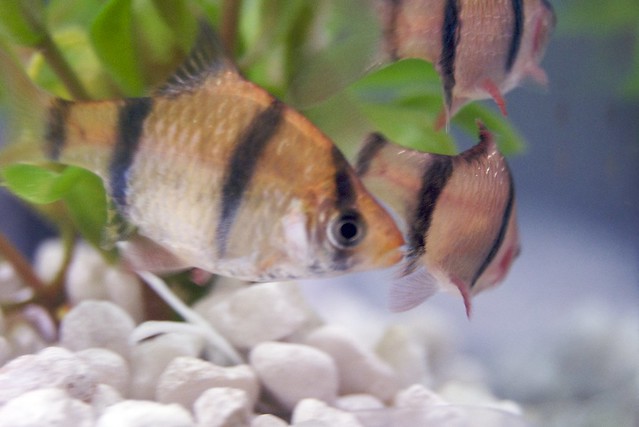 |
| (Photo credit: Wikipedia) |
There are many diseases that can affect the fish in your aquarium. Most diseases can be put into four major categories; Bacterial, Viral, Parasites and Fungus. The common aquarium fish diseases we will focus on in this article are bacterial. There are much more then what we will cover today but the ones below are a good mixture of fatality and ease of treatment.
One must remember that the first step in fighting any disease in your aquarium is to observe your fish on a daily basis for any signs of illness or irregular behaviour. Over time you will naturally know when something doesn't look right. When any aquarium disease is detected you should act immediately to help improve the chances of your fish making a full recovery.
Fin rot is probably one of the most common bacterial infections that appear in aquarium fish. The primary cause of fin rot is poor water quality. It is very easy to diagnosis fin rot because the fins are actually rotting away and will look as if they are dissolving down to the body of the fish. There are many medications that you can purchase in your local pet store designed specifically to address fin rot. You will also want to do frequent water changes to help improve the quality of the water.
Guppies and other fish that are considered livebearers are very susceptible to another bacterial disease called mouth fungus. The most obvious symptom that your fish is suffering from mouth fungus is that of cotton like growth appearing in the mouth. This growth will prevent the fish from eating so you will also observe a loss of weight. When treated quickly with an antibiotic bath mouth fungus is not fatal. You will also want to carry out partial water changes of your aquarium.
Vibriosis can quickly become fatal in fish and spread rapidly throughout your aquarium. There are several signs of infection, reddening of the body, changes in colour and a swollen abdomen and eyes. It is extremely important that if you notice these symptoms that you remove the infected fish to a quarantine tank as quickly as possible to help fight spreading of the infection to the other fish. The reality is that vibriosis is fatal. Antibiotics may help but are very unlikely. One should focus on protecting the other fish in the aquarium from the bacterial disease. By doing full water changes and treating the water with antibiotics.
can quickly become fatal in fish and spread rapidly throughout your aquarium. There are several signs of infection, reddening of the body, changes in colour and a swollen abdomen and eyes. It is extremely important that if you notice these symptoms that you remove the infected fish to a quarantine tank as quickly as possible to help fight spreading of the infection to the other fish. The reality is that vibriosis is fatal. Antibiotics may help but are very unlikely. One should focus on protecting the other fish in the aquarium from the bacterial disease. By doing full water changes and treating the water with antibiotics.
The last bacterial disease to be discussed that has no treatment is piscine tuberculosis. There will be a major loss of weight and colour in your aquarium fish. The eyes of your fish may abnormally protrude from the body. This attacks the fish's respiratory system and is highly contagious and fatal. Piscine tuberculosis is less common but if it occurs you will lose much fish. The only treatment is to separate all the fish into individual quarantine tanks and observe. You will have to strip down the main tank, disinfect it and restock it. Ultimately you have to start all over again.
Keeping an aquarium can bring many hours of enjoyment. The best treatment for any disease that can affect your aquarium fish is prevention. By regularly observing your fish and acting upon signs of disease quickly you can keep your fish happy and healthy and avoid any catastrophes.
David J. Clemen is an active contributor to http://freeaquariumadvice.com a completely free online resource for both the beginner and expert aquarium enthusiast. Article Source: EzineArticles |






